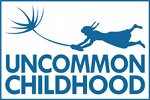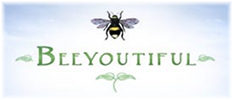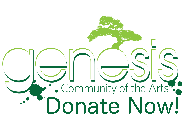Green School Bali
February 1, 2013 in Asia, Education, Indonesia, Inspiration, Travelogue
If you’ve been reading along for any length of time you’ve probably noticed that we’re not too tethered to the idea of “school” in the traditional sense. It’s not that we’re anti-school, because we’re not at all. Schools are very important, they provide the basics for many, many kids but for too many families public schools are the only option available.
What if your could attend a school with an environmental impact of almost zero, where the buildings were created from natural materials in the area, where ecology and sustainability were daily lessons woven into the fabric of the traditional subjects? John Hardy’s Green School in the hills of Bali is that school. They’ve been named “the greenest school on earth” by the powers that be in America, and while that’s quite a title, our friend Ben humbly points out that they’ve still got a long way to go. Their plans are ambitious!
Some of the interesting features of Green School:
- All of the buildings are made from bamboo and most are open air
- The furniture is all bamboo too, from the tiny chairs in first grade to their enormous, towering “heart of school” building that may be the tallest freestanding bamboo structure in the world. We think it looks like a set out of Avatar.
- There are goats, chickens, pigs and water buffalo on campus, that the kids farm as part of their educations
- There are rice paddies and gardens for each grade that the children tend to feed themselves sustainable lunches and sell the produce at the school’s farm stand for families.
- There is a purpose built mud wrestling arena… yes really, in which a unique form of Balinese martial arts is practiced and performed, and where the young kids have a bit of a wallow a couple of times a month just for fun.
- The buildings are connected by lava rock paths.
- The school swimming pool is a gorgeous natural spring with a small waterfall by the edge of the river.
- 80% of the school’s energy is renewable and generated by the fern shaped array of solar panels.
- Very soon their vortex generator (the first of it’s kind in the world) will begin cranking out more than enough power for the school from the river that runs through the grounds.
- There is a project underway on the school grounds, supported by students to breed endangered Balinese starlings. There are fewer than 20 left in the wild in Bali, the school has bred up 94 thus far!
- Blackboards are bamboo painted with blackboard paint.
- White boards are recycled car window class backed with white paper.
- Trash bags are cloth.
- Toilets are composting.
- Lunch scraps are fed to the pigs by the fourth grade.
When we arrived the place was positively alive with children. There are about 260 students, most of whom commute to the school, although there is room for a few boarders in their bamboo village across the river. 20% are Balinese, they’re working hard to increase that number. Parents hung out at the coffee shop near the entrance (an entrepreneurial effort of one of the school parents who got frustrated that there wasn’t good coffee on Bali, even though they grow it here, so he remedied that and now sells to resorts, and exports it!) Some moms were picking through the veggie stand while their kids monkeyed around on the ropes course. An after school ball game had spontaneously coalesced on the green space, and our boys dove right into the fray.
Ben Macrory was our contact at the school, through a friend of a friend. He does tours of the school every afternoon and has moved tens of thousands of people through the grounds, telling the Green School story and demonstrating that idealism and education can go hand in hand. He’s an enthusiastic guy, with a light in his eyes that betrays his complete commitment to this project. He talks fast, because he has a lot to say! You can take the guy out of Manhattan, but not the Manhattan out of the guy.
Their vision for the school is a completely environmentally sustainable environment in which education encompasses the whole child and emphasis is put on how we interact with each other and the planet. it’s a beautiful idea. It’s really as education should be, in an ideal world, and it’s hard to achieve, much less maintain and move forward, but the powerhouses behind this project are proving that it can be done.
If you’re a skeptic you’re now pointing out that this is small scale, high cost, difficult to replicate, and in Bali, for heaven’s sake, where there aren’t things like building codes and OSHA rules holding them back. All true. But that doesn’t mean that it’s not possible, that it’s not working and that it’s not worthwhile. It is infinitely worthwhile for every child who can attend. It only takes one child to change the world.
If you’re interested in meeting the man with the vision behind the project, you should Google John Hardy and watch his TED Talk about the school. Traditional education didn’t work for him, so he set out to change the world, and in a not so small way, on a tiny island on the far side of the world, he’s doing it!
We’re super excited to be going back next week to talk to their high school classes about creating a passion driven life and living your own way!











 RSS - Posts
RSS - Posts


























I love that you all got to go and visit this school ( and so perfect that you will be giving a talk! ) It looks beautiful and very unique! I went to an alternative public Middle School ( back in the day..the 70’s ), and love every minute of it. The premises and philosophy was similar to this Green school.This seems like a place where the kids WANT to attend. Hoping that the indigenous kids in Bali can take part. It should be “sustainable” for them too!
Thanks for sharing this with us! What an amazing school. It would be a dream to have many like it in the US. There are some that have similar principles. One in PA, just slightly too far from us for our kids to attend, was very impressive when I attended an open house last year. http://www.sevengenerationsschool.org/page.phtml/about-us
very cool!
I was very involved in appropriate technology for many years. I would love to visit this school sometime!!!
Another distinctive aspect of Green School is the totally unique, independent curriculum. Green School’s goal is to present a genuine alternative to what is currently on offer in classrooms worldwide and combine this with the amazing environment/sustainability projects with which the school interacts.
The original curriculum was written by Alan Wagstaff. In summary the teaching aims to prepare students for life after school without losing the essence of what it means to be a child or adolescent.
Our unique strategy is called the ‘three-framed-day’. Basically it means that through each day the students will be involved in three distinct lesson types each with their own purpose and methods.
A simple description of the three frames goes something like this:
The first frame is a thematic & human based lesson. The themes are drawn from the ‘culture’ of childhood/adolescence on a developmental continuum. Human based to us means engaging four elements of a human being – physical, emotional, cognitive & spiritual – in each lesson. The lesson blocks typically run for 4 weeks and are used as an introduction to new academic content. Many of the themes draw on the natural environment without diluting the essence of the students’ ‘culture’.
The second frame is about practising English and Mathematics skills for proficiency. These lessons are learning driven, targeted to individuals (as much as possible) and directed by the students. Inside each lesson would typically be a number of discreet skills for the students to learn. The pupils are able to identify which skill they are learning, how they are learning it and how they will know they have achieved it.
The third frame aims to connect students to the world. They are experiential in nature and preferably project based. Ideally the projects are drawn from the local community or are conservation/sustainable based in nature. In the younger classes we invite experts to come into the class rooms, through middle school the pupils would visit work places and in the high school students engage in real projects.
The school has an independent developmental emergent reading program which begins in the pre-school. It aims to foster a love of all aspects of language in a two fold way: one, by using the thematic lessons to introduce children to speaking & listening first and then reading & writing skills in a way that affirms childhood; and two, in the primary school by using proficiency lessons for learning of specific discreet skills at the individuals level. In this way we can closely record progress through discreet skills. The program incorporates whole language and phonics.
There are many other independent and fully developed programs at the school.
This system is the foundation on which the dedicated teachers are constantly building with original ideas. It allows for freedom in teaching and for teachers to ‘follow live leads’.
For more information contact the office on +62 361 469 875. Or you can contact me on shaun@greenschool.org
my daughter will be 6 years next oct , can she goes to this elementary school. i’m indonesian want to know is there a scholarship for local people? the school look great now i live in denpasar thanks
This looks AWESOME!!! I’m going to forward your link to some friends here who are interested in doing school differently. Thanks for sharing!
What a beautifully written piece! I’m so inspired to be moving there and having our kids attend school. There are also shorter term green camps: http://www.greencampbali.com/programs/holidays-programs/
Thanks for that link Dan! I didn’t realize they did camps too, what a fantastic way to include more kids!
Timotius, There ARE scholarships available, yes, but I don’t know any of the details. You would need to contact the school directly to ask about that! It is a fantastic learning environment, I very much hope that your daughter can go there!